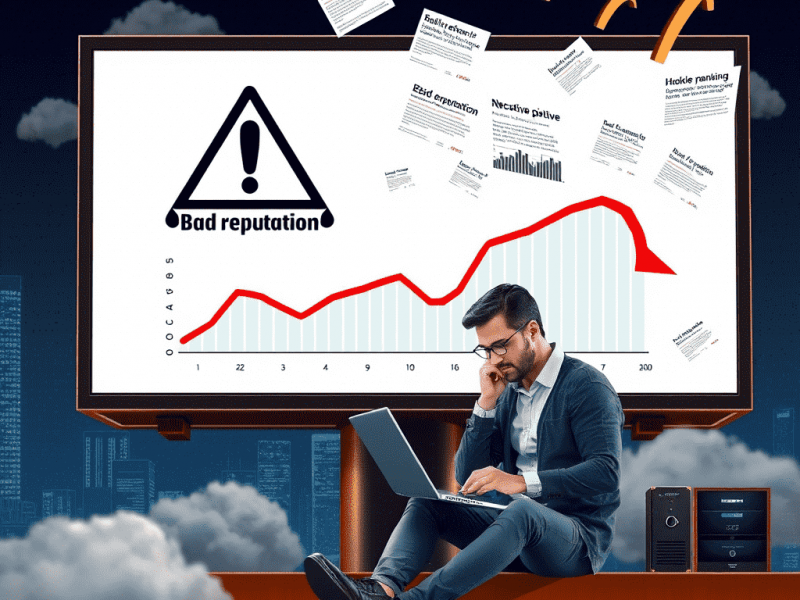Regardless of the size of the company, developing an email marketing strategy that works requires concentration due to its numerous moving components. Because of this, it’s important to properly manage every part and procedure to ensure a seamless fit.
But first, it’s helpful to understand why email marketing is so important in the first place before we delve any further into how to develop an effective strategy.
The Benefits of Email Marketing for Small Businesses
For a long time, email marketing statistics have been fairly consistent. Even though social media marketing is very popular, managing it requires a lot of resources, primarily because it typically involves multiple platforms.
While utilizing the best marketing tools can be beneficial, there is no denying that social media marketing can be expensive and labor-intensive.
That may be the reason that, given the choice between social media and email for their marketing budgets, 80% of marketers would choose email.
The fact that email marketing offers a strong 3,600% return on investment as opposed to social media marketing, which is difficult to measure, may also play a big role in this preference.
When preparing your marketing budget, as a marketer and business owner, you want precise information. Second, it is much easier to keep track of sales and email engagements.

Your email marketing may have the following objectives:
- Engage current and prospective customers
- Increase brand awareness and persistence
- Provide value through content
- Generate leads
- Nurture leads
Furthermore, if you have a good strategy, you can easily reach your customers as a small business by sending three to five emails per week. It is used by over half (64%) of small businesses, and in the past year, 78% of them reported higher engagement.
In conclusion, the following factors make email marketing perfect for small businesses like yours:
- It’s easy to use
- It’s inexpensive
- It’s easy to personalize
- It’s nonintrusive
- It’s measurable
From a marketing standpoint, email marketing fulfills all requirements. Nonetheless, the success of a campaign hinges heavily on how well your plan works.
How Can an Email Marketing Strategy Be Formulated?
The following actions can help you draft a marketing strategy from the beginning:
- Select the proper tools
- Define your target audience
- Develop your email list
- Segment the audience
- Consider the context
- Set goals and objectives
All things considered, an email marketing strategy offers the definition, organization, and consistency of a campaign, ensuring that your messages are focused on reaching your objectives. You’ll be flying blind without a plan, and your email marketing strategy might not work out as planned.
Even if it’s reasonably priced, you’re still not taking advantage of all that it can do to advance your company.
What then is required to develop a winning strategy? Now let’s get started.
Select the Proper Tools
Without the appropriate tools to help you draft, send, track, and evaluate the effectiveness of your emails, no strategy is complete. An email marketing service that allows you to do everything from a single platform is the first tool you need.
Many of your email marketing tasks can be automated with the best email marketing services. Constant Contact is among our best recommendations for this.

It can do almost everything else on the platform; writing email content is the only thing it can’t do. With up to 500 contacts and 24 sends per contact, its Core plan starts at $9.99 per month. If you want complete automation, you can choose the Plus plan, which costs $45 per month.
With Constant Contact’s tiered pricing structure, you can progressively increase both the cost and plan as your subscriber list grows. The sole disadvantage is that there isn’t a free plan to test out.
If all you want to do is send emails, you might also want to look into SendinBlue. It offers an unlimited contact and 300 email sending per day free plan. However, it lacks any cutting-edge features. Constant Contact has an advantage over other email marketing platforms because it is dedicated to email marketing and offers a plethora of features that make campaign creation easier.
You can find more email marketing tools on our list or conduct independent research. Usually, all you need to complete your toolkit is one email marketing program.
Define Your Target Audience
Your target audience is what your content is about, so before you can create a strategy that will effectively reach them, you must define them. Determining the strategies you can employ to engage and convert your target audience is your aim when defining them.
Consider it similar to selecting fishing bait. Before choosing the most likely bait to draw the fish, you need to identify the fish you want for supper.
The following things are helpful to keep in mind when defining your target audience:
- Current customers
- Competitors’ customers
- People who might benefit from your offerings
Because they are the low-hanging fruit of your email campaign, current customers are a good indicator of your target audience. However, examining the clientele of your rivals can also point you in the direction of markets for business growth, as can examining those who aren’t making purchases but ought to. Do they merely not know about your offerings? That’s an opening for development.
Try to classify these groups according to the following criteria:
- Age
- Gender
- Marital status
- Parental status
- Occupation
- Location
- Income
- Education
You can get a decent idea of the demographics of your ideal audience from the data you gather. Fill in as much information as possible about your ideal buyer’s interests, purchasing patterns, and personality.
Develop Your Email List
Email collection services offer easily purchased email lists, but the quality is mediocre at best. Building an email list of potential customers is a good idea. Asking them for it is the best way to make sure of that. Provide a voluntary opt-in form on your company website so that visitors can choose to receive emails and notifications from you.

You can use gated content or a one-time offer to entice visitors to your website to provide their email address. Attendees at trade shows and other events are likely to fall into your ideal audience spectrum, so don’t pass up the chance to get emails or business cards.
Segment the Audience
It takes a lot of work to define your target audience and gather email addresses, but it’s not the end of the process. A thirtysomething married woman with two young children and a twenty-two-year-old man moving into his first apartment can scarcely receive the same message.
You must tailor the content of your emails to each individual in order to meet their unique needs and issues.
Contrary to popular belief, personalization in marketing is quite significant. According to a 2020 survey of consumers in the US and the UK, 42% of respondents thought content personalization was very or somewhat important. Furthermore, by speaking to each subscriber individually, you can establish rapport and trust.
The best course of action, short of writing a message specifically for every person on your list, is to group your audience according to shared interests. Although segmenting by profession or income may be more appropriate for certain products and services, the simplest would be by gender or age range. If that seems like a lot of work, keep in mind that 58% of all email revenue is generated by segmented emails.
Regardless of how you segment your email list, give each group a distinct set of identifiers and a buyer persona. Creating personalized content based on various profiles can be easier when you have a buyer persona.
Consider the Context
In marketing, context is important. You must take into account both internal and external factors that determine your goals and the strategies required to achieve them because your business operates in the real world.
A Strengths, Weakness, Opportunity, and Threat (SWOT) analysis can be used to analyze it. Think about the special selling points that set you apart from the competition (Weaknesses) and the areas where you are disadvantaged (Strengths).
Next, think about circumstances and trends in your sector or industry that could support the expansion of your company, like devoted subscribers (Opportunities).
Lastly, make a list of the patterns and circumstances that might make it more difficult for you to produce leads and income, such as a tight budget.
Set Goals and Objectives
Setting marketing goals and objectives is the next step in assembling your strategy now that you have all the necessary resources. By doing this, you can assess the success of your marketing campaigns.
Your desired results are your goals. What goals are you attempting to achieve? What is the intended outcome for each campaign’s conclusion? Increasing sales, improving ROI, or raising subscriber engagement are a few examples of goals.

Goal-oriented steps are called objectives. Goals should occasionally be divided into more manageable, achievable targets. For instance, encouraging customers to download your mobile app could be one of your objectives if you want to increase customer engagement.
It’s important to keep in mind that objectives ought to support your efforts rather than hinder them. Email marketing should aim to achieve specific, measurable, actionable, realistic, and time-bound (SMART) business goals. The easier it is to create strategies that work, the more “SMART” your goals are.
For instance, you might observe that grouping specific products together boosts sales for both you and your rivals. In that scenario, you may want to use your email to offer a particular bundle to your current customers for a week at a discounted rate in order to increase sales by fifty percent. By monitoring the offer’s click-through rates, you can gauge the response. Because these are current clients and the offer has a time limit, it is reasonable.
SMART goals and objectives enable you to track the effectiveness of your campaigns and make necessary adjustments. SMART objectives for your email marketing could be:
- Adding to your email list
- Increasing the open rates
- Improving click-through rates
- Improving sales through email
Your marketing objectives may be applicable to specific campaigns or, at a given time, to every campaign you run. Your business objectives will determine what you decide to do.
How Do You Put Your Strategy Into Practice?
At this point, you have everything you need to put your plan into action. The difficult part is about to begin: writing the email. The best practices for writing and distributing emails that result in leads and conversions are listed below.

- Content: Keep it brief, adhere to your brand’s image, and focus on just one subject. Long emails are disliked by recipients, and you don’t want to overdo the subject matter in your email.
- Personalization: Use their name when addressing them, and make sure your message is relatable, cordial, and pertinent. Write to the recipient as you would a friend when addressing a letter. Make use of a tone that you know. If at all possible, include information and references unique to the region, and sign off on your email with a personal message.
- Subject line: The majority of people (64%) choose whether or not to open an email based on its subject line. Make the time to craft compelling, individualized, and interesting subject lines for each email you send. Take inspiration from examples of effective subject lines.
- Design: Even though it might not seem like much, an attractive and well-designed email can encourage more recipients to reply. It shouldn’t be too difficult to choose from the many templates offered by email marketing software.
- Image:One striking and pertinent image that works with all devices should be included.
- CTA:Provide a single call to action (CTA) that directs the recipient to the pertinent offer or landing page. Make sure the call to action is visible and distinct from the other content in your page.
- Schedule:Make sure you have a good reason for sending emails at a specific time and day. You could base it on statistics indicating when the majority of your subscribers click through to your emails. If you’re clueless, you can start emailing people at 11 a.m. Eastern time on Tuesdays, when according to one study, you’re most likely to receive a response.
- Mobile: You should make sure your email looks good on all devices because 61.9% of email opens in 2019 came from mobile devices.
- Unsubscribe: Make sure your recipients can always remove themselves from your list. Even though it might seem counterproductive, doing this will increase your credibility. People will open your emails and not mark them as spam if they are aware that they can unsubscribe at any time.

Andriy Kravets is writer and experience .NET developer and like .NET for regular development. He likes to build cross-platform libraries/software with .NET.


